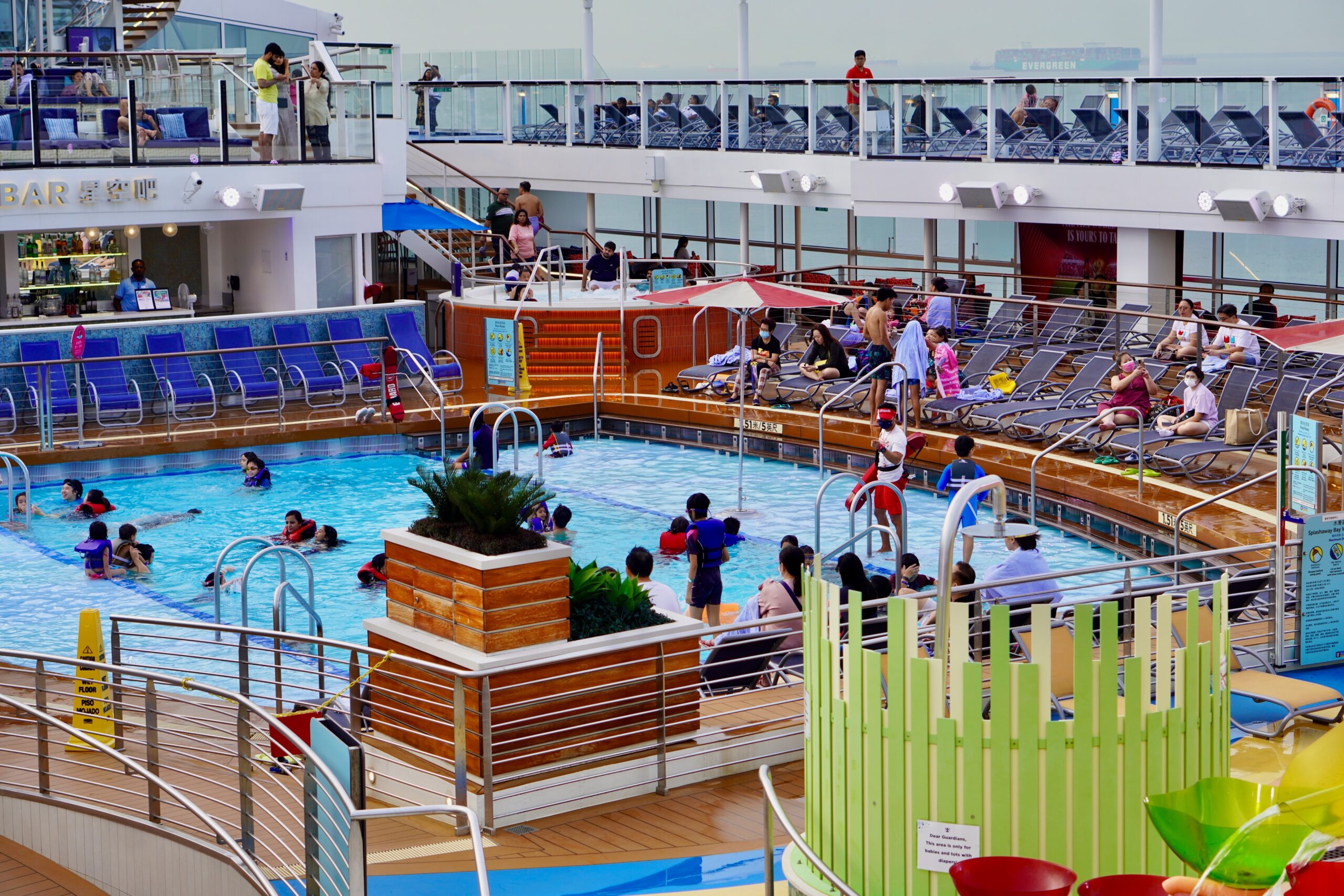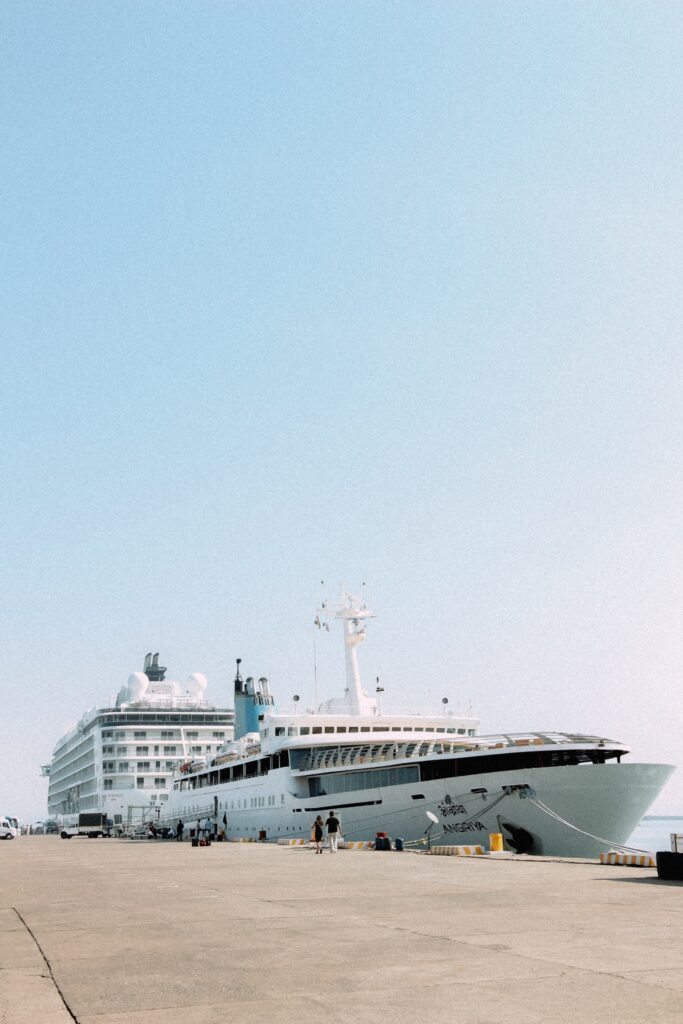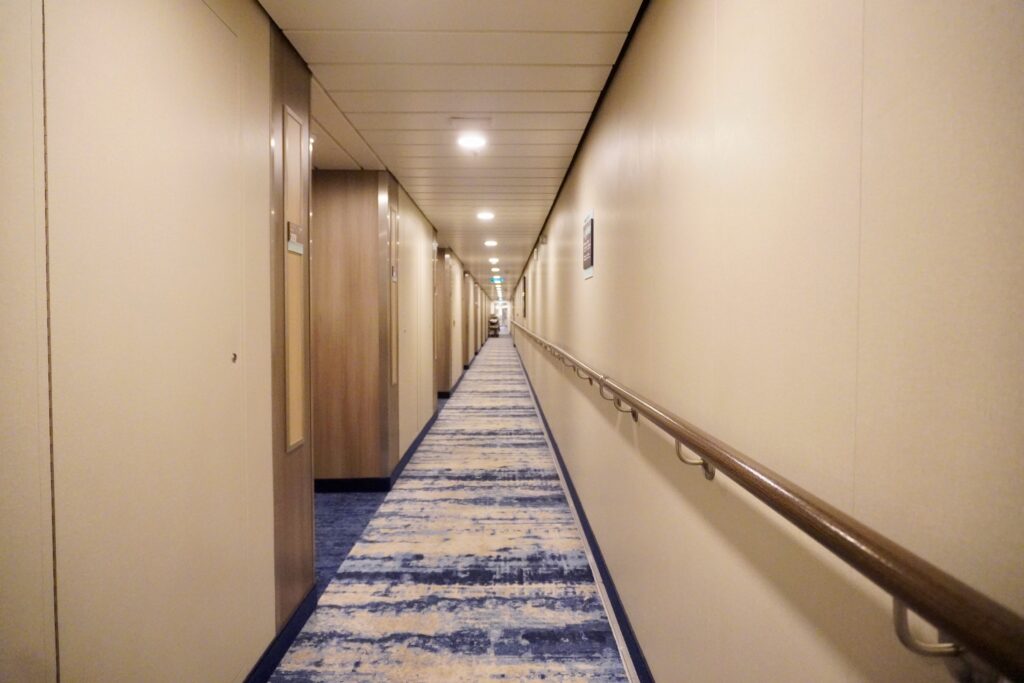
In this article, we will discuss the safety concerns that you might have when it comes to cruising. We will address common worries such as accidents, illnesses, and security. By the end, you will have a better understanding of the safety measures that cruise lines have in place to ensure a enjoyable and worry-free experience onboard. So, let’s explore the safety concerns about cruising and put your mind at ease.
Safety Features on Cruise Ships
Lifesaving Equipment
When you embark on a cruise ship, you may wonder about the safety measures in place to protect you and your fellow passengers. Rest assured, cruise lines prioritize passenger safety and have numerous safety features in place. One of the most important aspects of safety on a cruise ship is the availability of lifesaving equipment. Lifeboats, life rafts, and life jackets are strategically placed throughout the ship to ensure quick access during an emergency. These equipment are regularly inspected and maintained according to strict regulations, ensuring their effectiveness in the event of an evacuation.
Emergency Procedures
In addition to lifesaving equipment, cruise ships have well-defined emergency procedures in place. Before the ship even sets sail, all passengers must participate in a muster drill, which educates them about emergency procedures and where to go in case of an evacuation. Crew members are trained to handle emergency situations efficiently and effectively. They undergo extensive training on firefighting, first aid, and crowd control, among other skills that are crucial during emergencies. This ensures that they can handle any situation that arises and prioritize passenger safety.
Fire Safety Measures
Fire safety is a significant concern on any vessel, and cruise ships are no exception. To prevent and combat fires, these ships are equipped with state-of-the-art fire suppression systems. The ships are designed with fire-resistant materials and compartmentalized spaces to prevent the spread of flames and smoke. Additionally, the crew conducts regular fire drills, ensuring they are well-prepared and equipped to handle fire emergencies. Advanced detection systems are also in place to identify any potential fire hazards before they escalate into a serious threat. These measures combined significantly reduce the risk of onboard fires and prioritize your safety during your cruise.
Cruise Ship Accidents and Incidents
Capsizing
While cruise ship accidents and incidents are rare, they do happen from time to time. One of the most concerning accidents is the possibility of a ship capsizing. However, it’s important to note that modern cruise ships are designed with stability in mind. Advanced technology, such as stabilizers and ballast systems, help maintain the ship’s balance even during rough sea conditions. In the unlikely event of a capsizing, the crew is well-trained to handle such emergencies and provide guidance to passengers. Evacuation plans and life-saving drills are regularly practiced to ensure that your safety is always the top priority.
Collisions
Another safety concern is the possibility of a collision at sea. Cruise ships have sophisticated navigation systems that enable them to detect and avoid potential collisions. Additionally, experienced officers and crew members are responsible for overseeing the ship’s navigation, constantly monitoring for any potential risks. In the unlikely event of a collision, cruise ships have reinforced hulls and watertight compartments that minimize damage and prevent the ship from sinking. These safety features, combined with the crew’s expertise and adherence to strict protocols, mitigate the risk of collisions and ensure your safety onboard.
Onboard Fires
While fire safety measures are in place, onboard fires remain a potential safety concern. It’s important to note that most onboard fires are minor and can be swiftly extinguished. Cruise ships have extensive fire detection and suppression systems, as well as well-trained crew members who can quickly respond to any fire-related incidents. Regular maintenance and inspections are conducted to identify and rectify any potential fire hazards. Additionally, all ships are equipped with sufficient fire extinguishers and automatic sprinkler systems, further minimizing the risk of fires spreading and endangering passengers.

Medical Emergencies on Cruise Ships
Availability of Medical Staff
Cruise ships have medical staff on board to handle any medical emergencies that may arise during your journey. These medical professionals are well-trained and experienced in providing primary care and basic emergency treatment. They are capable of handling a range of medical conditions, from minor illnesses to more serious emergencies. The medical staff is available 24/7, ensuring that you have access to medical assistance whenever needed.
Onboard Medical Facilities
Cruise ships are equipped with medical facilities that can cater to a wide range of medical needs. These facilities are equipped with the necessary medical equipment and supplies to provide essential healthcare services. The medical facilities are capable of handling minor procedures, administering medications, and stabilizing patients until they can be transferred to a shoreside hospital if necessary. Rest assured that cruise ships are well-prepared to handle medical emergencies and have the necessary resources to ensure your well-being.
Medical Evacuations
In rare cases when a passenger requires more advanced medical care, cruise ships have protocols in place to facilitate medical evacuations. In such instances, the ship will contact the nearest shoreside medical facility or the coast guard, depending on the severity of the situation. The necessary arrangements will be made to ensure the safe transfer of the patient to the appropriate medical facility. Cruising companies work closely with medical and transportation authorities to ensure that medical evacuations are carried out smoothly and efficiently, prioritizing the health and safety of the passengers.
Security Measures on Cruise Ships
Surveillance Systems
To ensure the safety and security of all passengers, cruise ships are equipped with comprehensive surveillance systems. These systems include CCTV cameras strategically placed throughout the ship to monitor public areas, corridors, and vital access points. The surveillance team constantly monitors the footage, allowing for quick response to any suspicious activity or potential security threats. This enhances overall passenger safety and provides reassurance that security personnel are closely monitoring the ship at all times.
Access Control
Cruise ships employ access control measures to regulate entry into restricted areas and ensure that only authorized personnel have access to certain sections of the ship. This helps prevent unauthorized individuals from accessing sensitive areas and maintains the security of the vessel. Additionally, passengers are issued cabin keys or access cards that grant them access to their designated areas, further enhancing security and preventing unauthorized access to private spaces.
Security Personnel
Cruise ships have trained security personnel on board who are responsible for maintaining order and ensuring the safety of passengers and crew members. These security personnel undergo rigorous training on crowd control, conflict resolution, and emergency response protocols. They are present in public areas, monitoring the surroundings and providing assistance when needed. These security measures, combined with the presence of uniformed personnel, create a safe and secure environment for all passengers on the ship.

Passenger Safety Guidelines and Education
Muster Drills
Before the ship sets sail, all passengers are required to participate in a muster drill, also known as a safety drill. During this drill, passengers gather at designated muster stations, and crew members provide instructions on life jacket usage and evacuation procedures in case of an emergency. This familiarizes passengers with the safety measures and ensures that they are well-prepared to respond appropriately in an emergency situation. Muster drills are a vital component of passenger safety education and are conducted onboard every cruise ship.
Safety Briefings
In addition to muster drills, cruise ships provide safety briefings in the form of safety brochures or videos placed in passengers’ cabins. These briefings cover important safety information, such as emergency procedures, location of lifesaving equipment, and general safety guidelines onboard. By providing this information in advance, cruise lines aim to ensure that passengers are well-informed about their safety and can take necessary precautions throughout their journey.
Educational Programs
Many cruise lines offer educational programs and activities that aim to further enhance passenger safety and awareness. These programs may include talks or workshops conducted by experts in various safety-related fields. Passengers can learn valuable safety tips, such as how to prevent accidents, what to do in an emergency, and how to stay safe while enjoying various activities onboard. These educational programs are designed to empower passengers with knowledge and promote a culture of safety throughout their cruise vacation.
Safety Inspections and Regulations
International Maritime Organization (IMO)
Cruise ships are subject to strict safety standards set forth by the International Maritime Organization (IMO). This specialized United Nations agency establishes regulations and guidelines that govern the safety and security of international shipping. Cruise ships undergo regular inspections to ensure compliance with IMO standards, further enhancing passenger safety.
SOLAS Convention
The Safety of Life at Sea (SOLAS) Convention is an international maritime treaty that sets minimum safety standards for ships, including cruise ships. SOLAS covers essential aspects such as construction, stability, fire safety, and navigation. Cruise ships are required to comply with SOLAS regulations and undergo periodic inspections to maintain their certification. This ensures that they meet the highest safety standards and provide a safe environment for passengers and crew alike.
Flag State Regulations
Cruise ships are registered under a flag of a specific country, known as the flag state. The flag state is responsible for regulating and inspecting the ships registered under their flag. They ensure that cruise ships meet international safety standards and comply with relevant regulations. These inspections and oversight by the flag state contribute to the overall safety and security of cruise ships and provide assurance to passengers.

Risk Assessment and Management
Weather Conditions
Cruise ships closely monitor weather conditions to ensure the safety and comfort of passengers. Experienced navigational officers receive regular weather updates from specialized meteorological services. If adverse weather conditions are anticipated, the ship’s course may be altered to avoid the worst weather. Cruise lines prioritize passenger safety by taking appropriate measures to minimize the impact of adverse weather conditions on the journey.
Navigational Safety
Cruise ships invest in advanced navigational equipment and technology to ensure safe and accurate navigation. This includes GPS systems, radar, and sonar, among other tools that aid the officers in safely maneuvering the ship. Navigational officers undergo extensive training and certification to ensure their proficiency in navigating the vessel. Through careful planning and adherence to navigational safety guidelines, cruise ships can effectively manage potential risks and prioritize your safety.
Crew Training
Cruise ship crew members are trained extensively to ensure they can handle a range of situations that may arise during the voyage. From emergency response to crowd management, crew members receive comprehensive training to equip them with the necessary skills to ensure passenger safety. This includes ongoing training, drills, and simulations to keep their skills sharp and up to date. By investing in crew training, cruise lines demonstrate their commitment to passenger safety and risk management.
Health and Sanitation Standards
Food Safety
Cruise ships adhere to stringent food safety standards to ensure the well-being of passengers. The food preparation areas and kitchens onboard are regularly inspected to ensure compliance with health and safety regulations. Cruise lines employ highly trained culinary staff who follow strict protocols for food handling, storage, and preparation. Regular health inspections are conducted to maintain high food safety standards and prevent the outbreak of foodborne illnesses or contamination.
Cleanliness and Hygiene
Maintaining a clean and hygienic environment onboard is pivotal in ensuring passenger well-being. Cruise ships implement rigorous cleaning protocols, including regular sanitization of public areas, cabins, and facilities. Hand hygiene stations are readily available throughout the ship, encouraging passengers and crew members to practice good hand hygiene. By prioritizing cleanliness and hygiene, cruise ships create a healthy and safe environment for everyone onboard.
Control of Infectious Diseases
Cruise ships have comprehensive protocols in place to prevent and control the spread of infectious diseases. Enhanced cleaning and disinfection measures are employed during outbreaks or suspected cases to limit the transmission of diseases. Medical facilities onboard are well-equipped to handle suspected cases and implement isolation protocols when necessary. Cruise lines work closely with public health authorities and follow their guidance in managing infectious diseases, prioritizing the health and safety of passengers.

Cruise Ship Security Threats
Piracy
The threat of piracy is a concern for any vessel that travels through international waters, including cruise ships. However, it’s important to note that cruise ships operate in areas with minimal risk of piracy, such as popular tourist destinations and well-patrolled shipping routes. Cruise lines work closely with international organizations and regional naval forces to monitor and assess the security situation in the areas they operate. Security measures, such as increased surveillance and security personnel, are implemented when necessary to mitigate the risk of piracy and ensure passenger safety.
Terrorism
Cruise lines have robust security measures in place to address the threat of terrorism. These measures include strict access control, enhanced surveillance systems, and thorough screening procedures. Anti-terrorism security personnel are trained to detect and respond to potential threats. Cruise lines also collaborate with law enforcement agencies, intelligence services, and international organizations to gather intelligence and assess any potential security risks. These concerted efforts aim to ensure that cruise ships remain secure and that passengers can enjoy their vacation without concerns about terrorism.
Criminal Activities
Cruise lines prioritize passenger safety and have zero tolerance for criminal activities onboard. Security personnel are present throughout the ship, monitoring public areas and promptly responding to any incidents that may compromise the safety or well-being of passengers. Cruise lines actively cooperate with law enforcement agencies to investigate any potential crimes and ensure that appropriate actions are taken. By creating a safe environment and implementing strict security measures, cruise lines work diligently to prevent criminal activities and protect their passengers.
Conclusion
In conclusion, cruising is generally a safe and enjoyable way to travel, considering the extensive safety measures in place on modern cruise ships. From lifesaving equipment to well-defined emergency procedures, cruise lines prioritize passenger safety. Medical emergencies are handled by qualified medical staff and well-equipped onboard medical facilities. The presence of comprehensive security measures, combined with crew training and surveillance systems, ensures the security of all passengers. Cruise industry adheres to international regulations and standards, maintaining the highest safety and sanitation standards.
While it’s essential to be aware of potential safety concerns, it is important to remember that cruising is statistically safer than many other forms of transportation. By choosing a reputable cruise line that prioritizes safety and adheres to strict regulations, you can confidently embark on a cruise vacation, knowing that everything possible has been done to ensure your safety and well-being.



